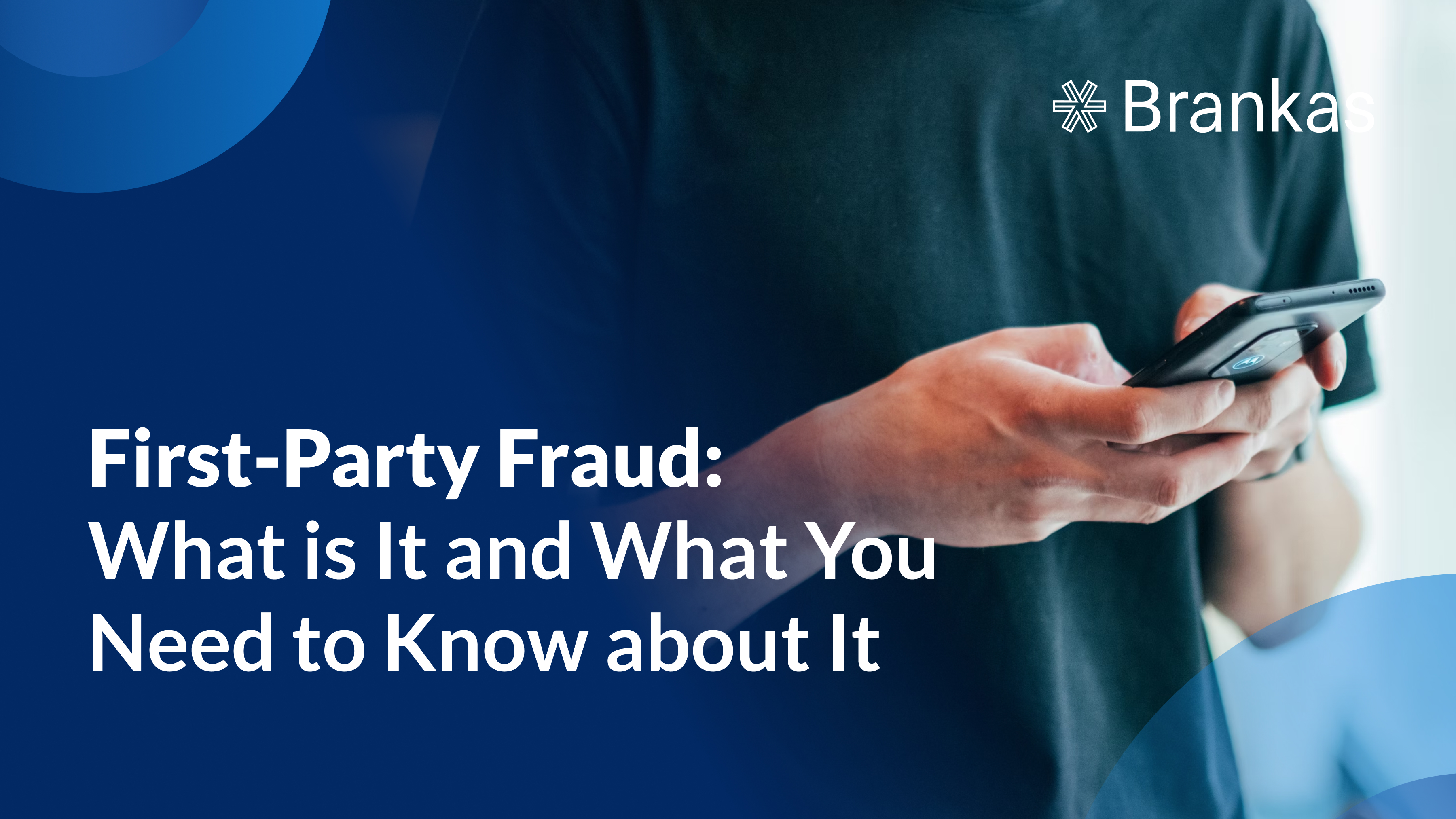
As the region enjoys rapid digital transformation, Cambodia stands out as a country to watch. Despite its historical challenges, Cambodia’s economy demonstrated resilience in 2023 and is primed for robust growth in the coming years.

PYMNTS’ Beyond eCommerce Fraud study in 2022 found first-party fraud costs US merchants over $89 billion yearly. The expensive loss comes from individuals who exploit chargebacks, promotions, returns, or the policies of merchant and financial service providers to obtain complementary merchandise or payouts illicitly. Imagine an individual applying for a loan without any intention of repaying it. The scheme revolves around later asserting that they never initiated the loan and absconding with the funds. Consider a user who makes a costly purchase using their credit card but harbors no intention of fulfilling the payment. The plan entails falsely claiming the transaction was unauthorized and petitioning for a chargeback.
These examples illustrate first-party fraud, which can cast a dark cloud over business success. Business owners must understand its nuances and implications. Enterprises must safeguard their enterprises against such threats proactively. This article will empower business owners with insights to shield their organizations from the insidious clutches of first-party fraud.
First-party fraud is a deceptive practice in which an individual deliberately provides false information or misrepresents their identity for illicit financial gain. Unlike typical fraud scenarios where an external party attempts to defraud a business or organization, first-party fraud is perpetrated by an otherwise genuine and authorized customer or user.
In contrast to third-party fraud, where external actors attempt to deceive or defraud an organization or business, first-party fraud involves authorized users or customers exploiting vulnerabilities in the system. It is more challenging to detect since the perpetrators have legitimate access and often manipulate the system from within, making it appear as if they are genuine users.
First-party fraud is characterized by several deceptive methods employed by individuals to gain illicit financial advantages. Understanding these methods is crucial for businesses to recognize and prevent first-party fraud effectively. Here are some key characteristics and methods often associated with this type of fraud:
1. False personal information or application fraud
Perpetrators typically provide false personal information, such as name, address, or contact details, during the application process for financial products or services. Another method is they may intentionally apply for loans without intention of repayment. They aim to secure funds and then default on the loan, leaving the lender with a financial loss.
2. Chargeback abuse
This method involves making a purchase using a legitimate credit or debit card and later claiming the transaction as unauthorized or fraudulent. This prompts a chargeback, resulting in a refund to the buyer while the seller incurs financial losses. Some individuals abuse chargeback systems on e-commerce platforms by falsely claiming that they did not receive the purchased item or that it was damaged. They receive refunds or replacements, effectively obtaining products for free.
3. Return fraud
Individuals buy items intending to return them after use, sometimes in a damaged or altered state. Someone purchases an expensive camera, uses it for a photography project, and then returns it to the retailer claiming it is faulty. They receive a refund despite the product working perfectly.
4. Policy exploitation
Offenders may exploit loopholes in a business’s policies to obtain free merchandise or financial benefits. An individual might repeatedly make small purchases to receive multiple gifts, exploiting the promotion’s terms during a promotional event that offers a free gift with a purchase.
5. Bust-out fraud
A group of fraudsters applies for multiple credit lines using either stolen or fabricated identities. Instead of immediately maxing out these credit lines, the accounts are carefully managed to imitate the behavior of legitimate consumers. For instance, the perpetrators may ensure that monthly payments for each account are made promptly over an extended period. This gradual approach aims to build a facade of good credit, allowing them to open as many credit lines as possible across various financial institutions.
When the timing is deemed optimal, all the credit lines are rapidly maxed out, either simultaneously or within a short timeframe. The result is a wave of defaults across multiple lenders, inflicting substantial financial losses on these institutions.
6. Money mules
A culprit initiates contact with their mule through social media or email presenting an enticing job offer or a seemingly lucrative quick cash opportunity. The process unfolds with the fraudster depositing funds into the mule’s bank account, often through wire transfers or authorized electronic payments. They request the mule to transfer these funds to another account, frequently located overseas. This maneuver serves as a protective layer, effectively distancing the actual criminal from the illicitly obtained funds while unfortunately making the unwitting mule liable for their involvement in the crime.
First-party fraud can significantly disrupt businesses, particularly in the financial sector. The financial losses resulting from it directly affect a company’s profitability and can even push it toward bankruptcy. Any fraudulent scam imposes hidden costs beyond the immediate financial losses. These costs may include operational disruptions, increased security measures, and the diversion of resources to address the fraud issue.
First-party fraud can severely impact a business’s reputation and erode customer trust. When customers perceive that their personal and financial information is not secure, they may lose confidence in the business. Rebuilding this trust can be a challenging and time-consuming process, making it essential for businesses to prioritize reputation management in the aftermath of fraud incidents.
Engaging in or failing to prevent first-party fraud can have legal and compliance consequences for businesses. There may be regulatory requirements that businesses must adhere to depending on the jurisdiction and industry. Non-compliance can result in fines, legal actions, and damage to the organization’s legal standing.
Matt Cox of FICO says enterprises can easily miss first-party fraud. In contrast to third-party fraud, first-party fraud often presents itself as a credit risk issue. Delinquent accounts are typically routed through various collection processes. What sets first-party fraud apart is that these transactions are carried out using accurate information and appear to have legitimate intentions, making them considerably harder for fraud detection teams to identify. Consequently, first-party fraud may eventually be written off as uncollectible debt and sometimes unknowingly sold to external collection agencies.
Newer financial services providers and telecom companies venturing into payment processing and retail finance may find the challenge even greater. They often lack the historical data that established banks use to define patterns of legitimate first-party fraud, making it difficult to determine the appropriate course of action.
Preventing first-party fraud is a crucial challenge for businesses, as it involves fraudulent activities from seemingly genuine customers. It is an ongoing effort that requires a multi-layered approach. Companies can reduce their vulnerability to first-party fraud and protect their financial well-being by combining advanced technology, vigilant monitoring, and proactive strategies.
1. Know-your-customer (KYC) procedures
2. Transaction monitoring
3. Behavioral analytics
4. Machine learning and AI
5. Device fingerprinting
6. Regular audits and reviews
7. Geolocation verification
8. Enhanced authentication
9. Employee training
10. Data sharing and collaboration
11. Continuous improvement
12. Legal actions
Companies can monitor and mitigate the risk of first-party fraud to thwart fraudsters in their tracks effectively through the smart use of technology. Collaborate with organizations that provide solutions to defend against first-party fraud. Find one that can bolster security measures, streamline authentication processes, and ensure the integrity of financial transactions. APIs by Brankas empower businesses to authenticate users securely and offer real-time transaction verification, swiftly confirming the legitimacy of financial activities, which is crucial for detecting and halting fraudulent actions.
Brankas APIs grant businesses access to comprehensive account data, facilitating ongoing monitoring for signs of first-party fraud. This in-depth view allows for the detection of irregularities, such as unauthorized transactions or unexpected changes in financial behavior. Furthermore, these APIs support data analysis and pattern recognition, aiding in the identification of anomalies indicative of fraud. Businesses can establish transaction limits and controls, create user behavior profiles, and harness machine learning and AI to enhance their fraud detection capabilities. The integration of these technologies ensures proactive fraud prevention, safeguarding financial transactions and user data from potential threats.
The awareness of first-party fraud holds paramount significance in business. This clandestine threat poses substantial financial risks to businesses across industries. Business owners and leaders must take proactive preventive measures against this type of scam. The dynamic nature of fraud demands a multifaceted approach that includes robust authentication, real-time transaction monitoring, and vigilant data analysis. Enterprises can stay one step ahead of fraudsters and safeguard their assets and reputation by leveraging the latest technologies and innovative solutions.
The battle against first-party fraud will continue to intensify. It is not merely a matter of staying ahead but adapting and evolving alongside the fraudsters. Businesses can fortify their defenses by prioritizing awareness, education, and proactive measures.

As the region enjoys rapid digital transformation, Cambodia stands out as a country to watch. Despite its historical challenges, Cambodia’s economy demonstrated resilience in 2023 and is primed for robust growth in the coming years.

When Saudi Arabia unveiled its Open Banking Lab in early 2023, it marked more than just a technical milestone, it reflected the country’s tangible commitment to reshaping financial services. Learn how Saudi Arabia is leading the way in open banking and fintech opportunities in the region.